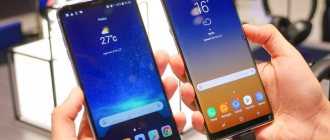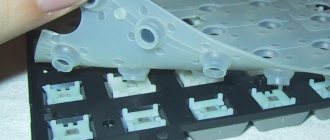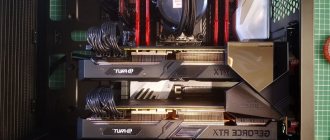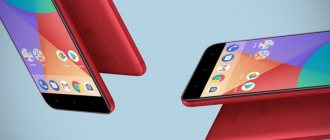Camera quality is the newest arms race for smartphones, and one of the biggest factors in taking great photos is the camera sensor. While high megapixel counts are becoming an increasingly popular trend, the size of a camera's image sensor is actually much more important. For example, Huawei constantly boasts that it includes larger sensors in its flagship phones compared to its competitors. Component manufacturers such as Sony and Samsung are also increasingly paying attention to the size of their sensors. But why is the size of a camera's sensor so important to taking great photos? And most importantly, why is sensor size so much more important than resolution if everything in the world tends to miniaturize?
The camera can be anything. It matters what kind of sensor it has.
In short, the larger sensor receives more light and the smaller sensor receives less, but the problem is much larger than just a little extra light. Let's understand everything in order.
What is the size of the phone camera sensor
At a basic level, the size of the sensor determines how much light enters the camera to create an image. While resolution plays an important role in detail, it is the amount of light captured that determines the camera's exposure balance, dynamic range, and even sharpness. That's why 16MP and 20MP DSLR cameras released a few years ago still offer better image quality than today's 108MP smartphones.
What is aperture and why is it important for a phone camera.
Most smartphone sensors typically measure just 1/2.55 inch, or about 1 cm, across, although some are larger, measuring 1/1.7 inch or larger. By comparison, DSLR camera sensors are over an inch in size, easily 4 or 5 times the size of a smartphone's sensor. Smartphone sensors are tiny in comparison, although some brands are trying to close the gap. At the moment, the largest sensor is on the disgraced Huawei P40 series smartphones. Its diagonal is 1/1.28 inches.
The sensor size of a DSLR camera is much larger than that of a smartphone. Hence the quality of the pictures.
Megapixels
The 16 MP sensor takes photos that consist of 16 million dots. The more dots, the higher the clarity of the image. Based on this, you can decide that a camera with a large number of MP takes better pictures than one with fewer. But in practice this is not entirely true.
The fact is that today's mobile cameras have more MP than required. Let's take televisions for example. A Full HD TV has a resolution of 2.1 MP, and the latest 4K TV has a resolution of 8.3 MP. Moreover, the camera of almost every phone has more than 10 MP.
Mobile screens are simply not able to fully convey such a high resolution, so you are unlikely to be able to see the differences between photos from modern mobile phones with different numbers of MP.
There is one caveat though. A camera with a resolution of more than 12 MP will be useful when framing. Having taken a photo with a 16 or even 20 MP mobile camera, you can cut off a huge fragment from it, but the resolution will still remain higher than that of a 4K TV. The cropped photo can be posted on social networks, blogs and Instagram without shame.
What are the advantages of cameras with a large matrix?
The larger the sensor, the more light it captures for a given shutter speed, ISO (exposure sensitivity), and aperture. The lack of light can be compensated by using a longer shutter speed, but this will lead to blurry images.
Another reason that a large sensor is better than a small one at the same resolution is wider dynamic range . This is the name given to the difference between dark and light areas. That is, with a larger matrix size, the picture will be clearer and more contrasty.
Samsung patents a moving camera for next-generation smartphones
Pictures also suffer from the point of view of the appearance of excess noise. Since the photosensitive elements themselves are located very close to each other, distorted light may fall on them and this will cause additional noise. Noise will also appear from the lack of light mentioned above. The sensitivity of the sensor will increase and the picture will deteriorate even more.
Image stabilization
Stabilization compensates for sensor shake and prevents the image from floating. This is an important parameter for photo and video shooting.
There are two types of stabilization - optical (OIS) and electronic (EIS). As the camera sensor moves through space with the photographer's hand, OIS keeps it relatively stable. Thanks to stabilization technology, shake in video recordings and blur in photos are reduced to a minimum.
OIS greatly increases the cost of a smartphone. It is necessary to allocate additional space inside the case for it, so electronic stabilization is more common in mobile phones, which creates a similar effect using software. With electronic stabilization, the perspective of individual frames that are part of the video changes. This technology can also be applied to video files created by an optically stabilized camera to achieve the desired smoothness.
In short, OIS is better than EIS: after all, electronic frame processing has a detrimental effect on quality and often creates the effect of jelly video. However, one cannot help but notice that electronic stabilization technology does not stand still. This fact is confirmed by the high quality of videos shot on devices with EIS.
How to improve your smartphone camera
With the move to increasingly higher resolutions (now above 100MP), increasing sensor size has become more important than ever. Of course, sensors with a resolution of 48 megapixels, 64 megapixels and even 108 megapixels will be able to provide a more or less detailed image in bright light on a sunny day, but you shouldn’t expect that you can zoom in on something that is a kilometer away, print it out and hang it in a frame. The quality will be sufficient only to distinguish the silhouette of the object, but nothing more. Such an increase is just a toy, but nothing more. Even the person's face cannot be distinguished. Especially if the lighting is not very good.
The quality of smartphone photos is greatly exaggerated.
Another relatively recent trend in the mobile space is pixel binning technology, which allows these high-resolution sensors to combine pixels to better capture light. These larger sensors, and thus larger pixels, greatly improve low-light photography. This results in less noise and much better colors, even in dimly lit conditions.
Our Ivan Kuznetsov touched on a slippery topic - I don’t need a video camera in my smartphone. And you?
Large sensors are just about the most important part of taking a good low-light photo. Even bokeh only works well on a large sensor. Smartphones still process the image further, but this is why the blur often turns out unnatural.
Aperture (aperture) and night mode
Aperture is another characteristic to consider when choosing a camera. This characteristic describes the camera's ability to collect light and resist diffraction blurring of image details.
The aperture is specified as follows: f/x (for example, f/2.0). It's worth noting that the lower the number, the wider (and better) the aperture. When buying a smartphone, pay attention to f/2.2 and lower, especially if you are going to shoot in the dark or indoors.
Photos taken in the dark, but in the presence of lighting on the iPhone 6:
Compared to all the devices in 2022, the Huawei P30 Pro seems to be in a completely different league. The Chinese smartphone's camera can literally see in the dark, which makes photos from the Samsung Galaxy S10 and iPhone XS a little confusing in the same conditions.
ON TOPIC: How to take photos in RAW format on iPhone and iPad (without loss of quality).
Edit photos before posting
Almost every Android phone has Google Photos, in which you can slightly edit the photo (crop, change brightness and contrast). On iOS, the situation is no different at all; the standard photo application also has some functions for customizing photos.
If you want to achieve greater results, then you should choose a more advanced editor for yourself. Personally, I chose Snapseed; it is the most convenient and free photo editor on mobile devices.
The editor has a ton of features, ranging from RAW editing and S-curve support to spot recovery and white balance tools. It also has the usual filters, encoding and auto-correction.
We also recommend VSCO X, our editor Dmitry uses it. He says he stopped using anything other than it.
Proper use of light
Regardless of whether you use a flagship or an ultra-budget smartphone, when taking photos you need to work with light correctly. The subject you are going to photograph should be facing the light source. Therefore, often a banal twist helps turn an ordinary photo with a minimum amount of detail into almost a work of art. If this is possible, then it is necessary to increase the brightness of the surrounding area by turning on additional lamps.
Take a lot of pictures
When you open any manual on professional photography, you will definitely read a very important point that says that you should take many shots of the same place or object. Preferably from different angles and heights (from the feet, knees and even from the ground).
This is the opinion of most professional photographers: you should take a lot of photographs and choose a few really successful ones. A good photographer will take many almost identical photographs and get a decent result, a bad photographer will take several and will not achieve the desired goal.
A brilliant photographer will take only a couple of pictures, but they will reflect his idea 100%.











